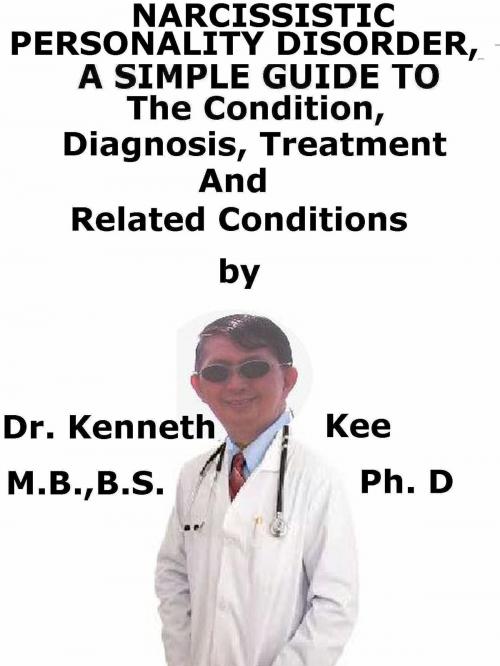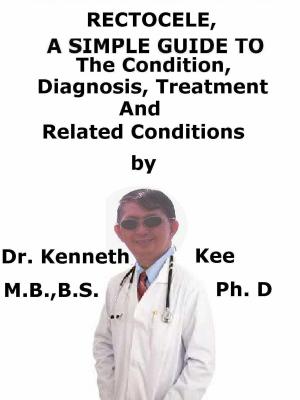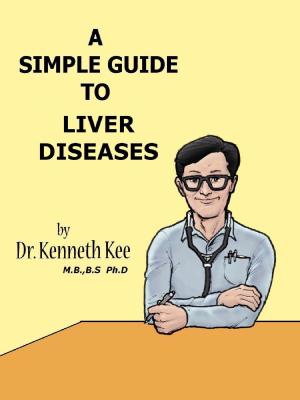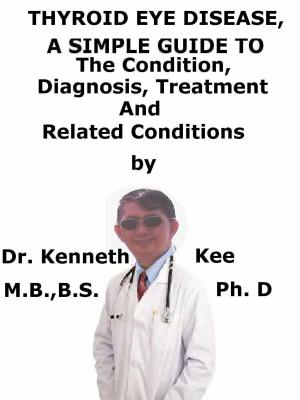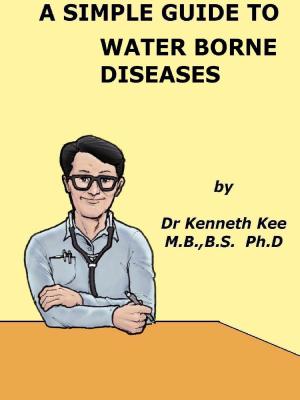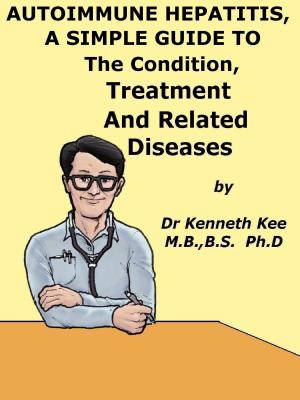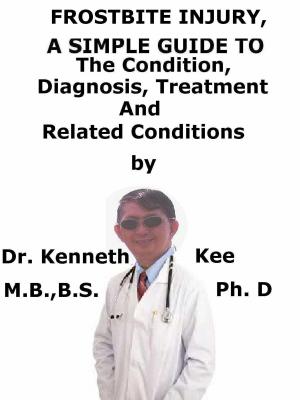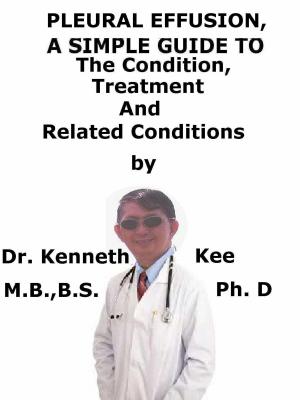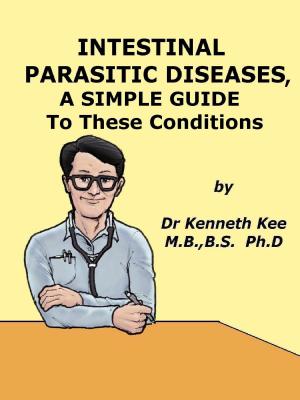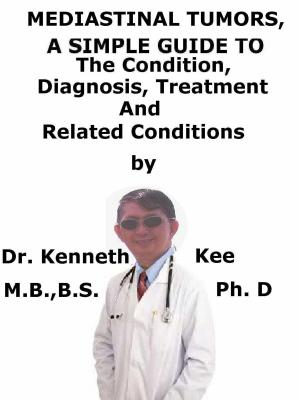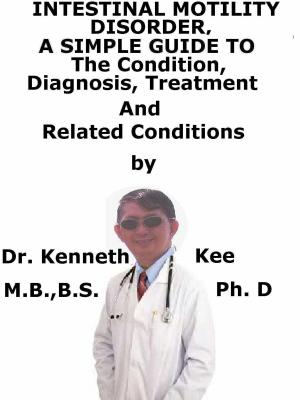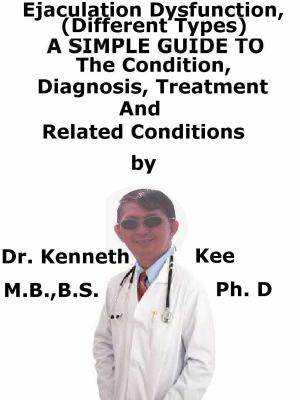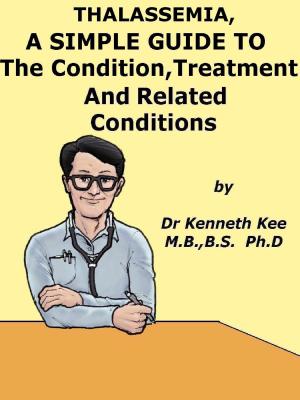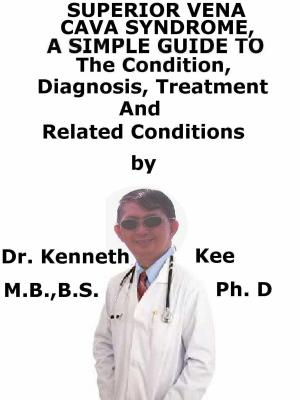Narcissistic Personality Disorder, A Simple Guide To The Condition, Diagnosis, Treatment And Related Conditions
Nonfiction, Health & Well Being, Psychology, Pathological Psychology, Personality| Author: | Kenneth Kee | ISBN: | 9780463650639 |
| Publisher: | Kenneth Kee | Publication: | September 24, 2018 |
| Imprint: | Smashwords Edition | Language: | English |
| Author: | Kenneth Kee |
| ISBN: | 9780463650639 |
| Publisher: | Kenneth Kee |
| Publication: | September 24, 2018 |
| Imprint: | Smashwords Edition |
| Language: | English |
This book describes Narcissistic Personality Disorder, Diagnosis and Treatment and Related Diseases
Narcissistic personality disorder is a personality disorder in which a person has:
- An extreme sense of self-importance
- An excessive preoccupation with themselves
- A lack of empathy for others
Narcissistic Personality Disorder (NPD) is a personality disorder in which the patient is engrossed in their own personal power, prestige and vanity.
The disorder was called after a mythological Greek character called Narcissus who felt in love with his own reflection in a lake.
Causes: - Genetics:
There are inherited characteristics from parents including oversensitive temperament. - Trauma:
Childhood trauma is a frequent experience of many people with a diagnosis of personality disorder and particularly early and severe abuse. - Family Context:
The environment that children grow up in has a large effect on their personalities as adults.
Symptoms
A person with this disorder may:
1.Respond to criticism with rage, shame, or humiliation
2.Take benefit of other people to achieve his or her own goals
3.Have excessive feelings of self-importance
4.Exaggerate achievements and talents
5.Preoccupied with unrealistic fantasies of success, power, beauty, intelligence, or ideal love
6.Have unreasonable expectations of favorable treatment
7.Need constant attention and admiration or positive reinforcement from others
8.Have no regards for the feelings of others
Diagnosis:
Narcissistic personality disorder is diagnosed using a psychological evaluation
No specific laboratory studies are used to diagnose narcissistic personality disorder (NPD).
These personality tests are normally either:
1.Self-report questionnaires given directly to the patient or
2.Semi-structured interviews done by the doctor
Treatment:
Long-term, consistent outpatient care is the treatment method of choice, normally involving a combination of psychotherapy and medicine treatment.
Methods for psychotherapy are:
1.Individual psychotherapy (specifically, psychoanalytic psychotherapy)
Mainstay of treatment; schools of thought are:
a. Object-relations approach and
b. Self-psychology approach, and
c. Various combinations of the 2 approaches
2.Group therapy
3.Family therapy
4.Couples therapy
5.Cognitive-behavioral therapy (CBT; in particular, schema-focused therapy)
6.Short-term objective-focused psychotherapy
No psychiatric medicines are adapted specifically toward the treatment of NPD.
Patients with this disorder often benefit from the use of psychiatric medicines to help relieve certain symptoms linked with the disorder or to treat concomitant axis I diagnoses.
Hospitalization should only be used as a temporary measure to permit stabilization of environmental stressors, adjustment of medication dosages, or both
The 2 main disciplines of thought in this regard are
1.Object-relations approach and
2.Self-psychology approach
In the first method, the job of the therapist is to actively interpret the patient’s narcissistic defenses while at the same time illuminating the patient’s negative transferences.
The end goal of therapy was to eliminate or decrease the patient’s pathologic grandiose self through direct confrontation.
By contrast, the second method advised a more empathic approach, with the therapist actually encouraging the patient’s grandiosity and promoting the development of idealization in the transference.
The end goal was to bolster the patient’s inherently deficient self-structure.
Presently, most doctors embrace a style that fuses elements of both
Medicines that can be combined with psychotherapy:
1.Antidepressants-SSRI
2.Antipsychotics
3.Mood stabilizers
TABLE OF CONTENT
Introduction
Chapter 1 Narcissistic Personality Disorder
Chapter 2 Causes
Chapter 3 Symptoms
Chapter 4 Diagnosis
Chapter 5 Treatment
Chapter 6 Prognosis
Chapter 7 Paranoia
Chapter 8 Personality Disorders
Epilogue
This book describes Narcissistic Personality Disorder, Diagnosis and Treatment and Related Diseases
Narcissistic personality disorder is a personality disorder in which a person has:
- An extreme sense of self-importance
- An excessive preoccupation with themselves
- A lack of empathy for others
Narcissistic Personality Disorder (NPD) is a personality disorder in which the patient is engrossed in their own personal power, prestige and vanity.
The disorder was called after a mythological Greek character called Narcissus who felt in love with his own reflection in a lake.
Causes: - Genetics:
There are inherited characteristics from parents including oversensitive temperament. - Trauma:
Childhood trauma is a frequent experience of many people with a diagnosis of personality disorder and particularly early and severe abuse. - Family Context:
The environment that children grow up in has a large effect on their personalities as adults.
Symptoms
A person with this disorder may:
1.Respond to criticism with rage, shame, or humiliation
2.Take benefit of other people to achieve his or her own goals
3.Have excessive feelings of self-importance
4.Exaggerate achievements and talents
5.Preoccupied with unrealistic fantasies of success, power, beauty, intelligence, or ideal love
6.Have unreasonable expectations of favorable treatment
7.Need constant attention and admiration or positive reinforcement from others
8.Have no regards for the feelings of others
Diagnosis:
Narcissistic personality disorder is diagnosed using a psychological evaluation
No specific laboratory studies are used to diagnose narcissistic personality disorder (NPD).
These personality tests are normally either:
1.Self-report questionnaires given directly to the patient or
2.Semi-structured interviews done by the doctor
Treatment:
Long-term, consistent outpatient care is the treatment method of choice, normally involving a combination of psychotherapy and medicine treatment.
Methods for psychotherapy are:
1.Individual psychotherapy (specifically, psychoanalytic psychotherapy)
Mainstay of treatment; schools of thought are:
a. Object-relations approach and
b. Self-psychology approach, and
c. Various combinations of the 2 approaches
2.Group therapy
3.Family therapy
4.Couples therapy
5.Cognitive-behavioral therapy (CBT; in particular, schema-focused therapy)
6.Short-term objective-focused psychotherapy
No psychiatric medicines are adapted specifically toward the treatment of NPD.
Patients with this disorder often benefit from the use of psychiatric medicines to help relieve certain symptoms linked with the disorder or to treat concomitant axis I diagnoses.
Hospitalization should only be used as a temporary measure to permit stabilization of environmental stressors, adjustment of medication dosages, or both
The 2 main disciplines of thought in this regard are
1.Object-relations approach and
2.Self-psychology approach
In the first method, the job of the therapist is to actively interpret the patient’s narcissistic defenses while at the same time illuminating the patient’s negative transferences.
The end goal of therapy was to eliminate or decrease the patient’s pathologic grandiose self through direct confrontation.
By contrast, the second method advised a more empathic approach, with the therapist actually encouraging the patient’s grandiosity and promoting the development of idealization in the transference.
The end goal was to bolster the patient’s inherently deficient self-structure.
Presently, most doctors embrace a style that fuses elements of both
Medicines that can be combined with psychotherapy:
1.Antidepressants-SSRI
2.Antipsychotics
3.Mood stabilizers
TABLE OF CONTENT
Introduction
Chapter 1 Narcissistic Personality Disorder
Chapter 2 Causes
Chapter 3 Symptoms
Chapter 4 Diagnosis
Chapter 5 Treatment
Chapter 6 Prognosis
Chapter 7 Paranoia
Chapter 8 Personality Disorders
Epilogue
